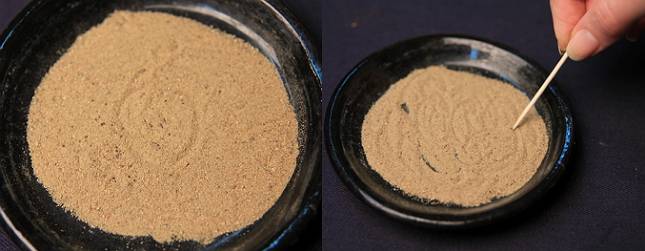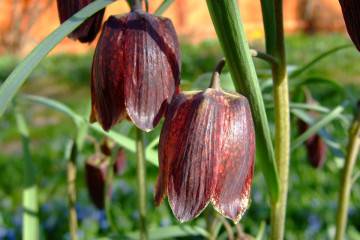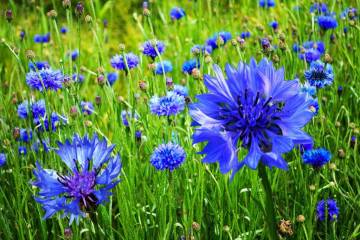Mattiola night violet - a flower with a wonderful scent
Content:
Mattiola night violet is an ornamental plant that adorns garden plots. The flower has a cute appearance, pleasant aroma.
What does mattiola look like, which family does it belong to?
Night violet is a spreading or erect plant grown as an annual or perennial. It grows up to 0.9 m. Belongs to the Cabbage or Cruciferous family.
The stems are pubescent or bare. Leaves are narrowed, elongated-elliptical, lanceolate, notched or whole.
The flowers are from snow-white to dark purple or yellow, collected in spike-shaped panicles. Delivers a pleasant aroma that intensifies at night. In place of the buds, a fruit is formed in the form of a pod. Seeds are gray-brown, very small, weighing no more than 1 mg.
Common varieties
The most popular varieties:
- Evening Aroma - up to 45 cm;
- Lilak - up to 0.5 m, with light purple inflorescences, large toothed leaves;
- Summer Evening - resistant to drought and frost, grows up to 50 cm;
- Starry Evening - up to 30 cm, with pink flowers;
- Lilac-pink - up to 40 cm;
- Night Violet - flowers of a rich lilac shade with a snow-white core, reaches 20-25 cm;
- Vorozheya - small flowers, lilac color;
- Evening Lights - a pale lilac-pinkish hue, up to 40 cm high.
History of appearance
Mattiola is a native of Asia Minor and Greece. It began to be cultivated as a horticultural crop in the 16th century. It was used to decorate houses for the holidays because of its wonderful scent.
Features of caring for matthiols in the open field
Night violet is an unpretentious plant. It is enough to provide him with optimal conditions for growing.
Lighting
The place in the garden should be sunny, but protected from direct rays. The flower can be planted next to taller plants to create shade.
Watering
Produced no more than 1 time per week. If it rained, then even less often. When the bush is poured, the roots will begin to rot, the plant will die.
Humidity and spraying
The flower easily tolerates low humidity. However, with prolonged drought, the night violet can lose its attractiveness. Therefore, during this period, spraying is recommended early in the morning or in the evening after sunset.
Priming
Recommended for planting in nutritious, loose soil with low to medium pH. If the acidity is too high, you can mix the topsoil with wood ash. When the land is barren, you need to add peat or humus.
Top dressing
Apply fertilizer during the growing season 2 times a month. You can not use manure for feeding. Only mineral fertilizers for flowers.
When and how it blooms
Long bloom: from June to September. During the day, the buds are closed, they open only at sunset.
How to propagate matthiola by seeds
The night violet reproduces only by seed. There are two seeding options.
Germinating seeds in the open field
Seeds are sown in the spring immediately after snow melts or in November. In the first case, flowering can be observed in the same year. With the second option, the inflorescences will appear only next summer. How to sow seeds:
- loosen the ground. If necessary, add wood ash, peat and humus;
- dig grooves 50 mm deep;
- moisten the soil with a spray bottle;
- evenly distribute the seed;
- cover with earth without tamping;
- spray from a spray bottle.
Sprouting in pots and transplanting into open ground
Matthiola can be grown indoors for seedlings, then the mature bushes can be planted in open ground.
How to sow:
- Disinfect the container 2 days before planting. Put drainage on the bottom. Pour a soil mixture of turf and sand (3: 1) on top, moisten.
- On the same day, soak the seeds in hot water for a day. Then wrap the seed in a damp cotton cloth, put in the refrigerator on the door for 24 hours.
- On the appointed day, dig rows in a container at a distance of 4 cm from adjacent ones.
- Place the seeds with tweezers so that they are 3 cm apart.
- Cover with earth, cover with plastic wrap and put in a warm, dark place for a week.
- After 7 days, transfer the crops to a bright room, provide a temperature of +12 ° C ... 14 ° C. They can be displayed on balconies and loggias.
- When the shoots sprout, remove the shelter.
- Transplant to a permanent place after 2-3 true leaves appear.
Night violets - how to plant in open ground:
- Water abundantly.
- Carefully, trying not to damage the fragile root, dive the sprouts into separate peat or paper cups filled with turf, leafy soil, perlite in a 1: 2: 1 ratio.
- After the snow melts and the earth warms up, plant the grown bushes in the garden, keeping a distance of 15-30 cm.
Young bushes need to be shaded.
Other options
Night violet reproduces well by self-seeding. In this case, no intervention from the outside is required.
Potential problems in growing matthiola outdoors
The night violet is a sturdy plant, but sometimes it is affected by diseases and insect pests.
Diseases
The night violet can be infected with keela (root system disease). The flower does not develop well, the leaves dry up and fall off, the mattiola dies. A sick bush must be burned, and the soil must be treated with special disinfectants.
Sometimes downy mildew appears on the bushes - a fungal disease. On the outside of the leaves, yellowish-green oily spots of a round or angular shape are observed. A grayish-purple bloom appears on the lower part of the plates. The preparations Fitosporin-M, Gamair, Planriz can cope with the fungus.
When a viral mosaic occurs, white, dark green or yellow spots form on the leaves. After a while, such foliage dries up and falls off. Fungicides Maxim and Lamador help.
Pests
Cruciferous fleas, white beetles, caterpillars start on the night violet. For mild damage, spray with wood ash with tobacco dust (1 to 1). In case of severe damage, use the poisonous preparations Fury, Kinmix, Arrivo.
Other problems
With excessive watering, the roots of matthiola begin to rot. The affected roots should be removed and the plant transplanted to a new location.
Summing up, we can conclude that the night violet flower with a wonderful fragrant smell after sunset is a wonderful decoration for the garden. She is not picky about her habitat, easy to care for. The only thing is important to prevent the keel of the roots and their decay, otherwise the plant will die.



















